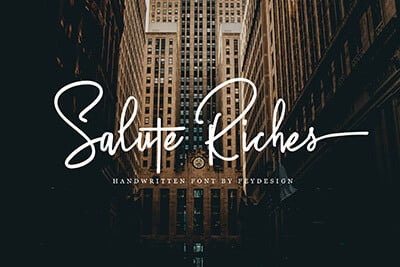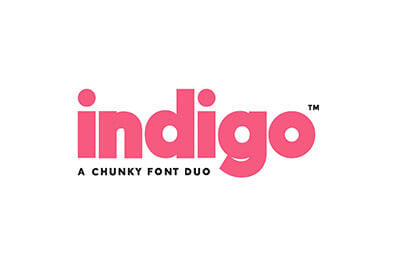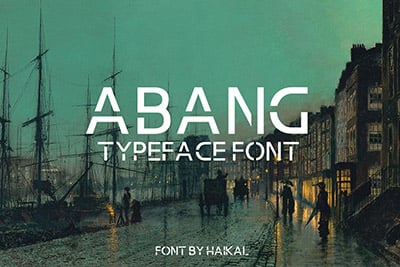What Is X Height in Typography?
In the intricate world of typography, each element plays a pivotal role in shaping the readability, aesthetics, and overall impact of printed and digital text.
One such fundamental aspect is the ‘x height’, a term that might seem cryptic to the uninitiated but is crucial for designers and typographers.
In this quick guide, we aim to demystify the concept of x height, exploring its significance, how it influences typographic design, and the considerations designers must make when selecting or creating typefaces.
By understanding x height, we can appreciate the subtleties that make typography an art form that communicates beyond mere words.
2 Million+ Fonts, Typefaces, and Design Resources With Unlimited Downloads
Download thousands of stunning premium fonts and typefaces with an Envato Elements membership. It starts at $16 per month, and gives you unlimited access to a growing library of over 2,000,000 fonts, design templates, themes, photos, and more.
What Is X Height in Typography?

X height refers to the height of the lowercase “x” in a typeface, essentially representing the size of the main body of lowercase letters, such as a, c, m, and o.
It is measured from the baseline, where letters sit, to the top of the lowercase x, providing a standard metric for comparing the relative sizes of lowercase letters within different fonts and styles.
The Impact of X Height on Readability and Aesthetics
The x height of a typeface significantly affects its readability and overall aesthetic. A larger x height improves legibility, especially at small sizes or from a distance, because it makes the main body of letters more prominent and easier to discern.
This attribute is particularly beneficial for digital screens, signage, and any context where quick legibility is paramount.
Conversely, a smaller x height might contribute to a more elegant or traditional appearance, suitable for headlines or decorative text where readability is not the primary concern.
Readability Across Mediums
The medium in which text is presented can influence how x height affects readability. For digital displays, with their inherent resolution limits, a larger x height helps maintain clarity.
In contrast, printed material can often accommodate smaller x heights without sacrificing legibility, thanks to higher resolution and the tactile experience of reading.
Aesthetic Considerations
Aesthetically, x height contributes to the personality and tone of the text. A larger x height can convey a straightforward, clear message, often seen in modern or minimalist designs. A smaller x height, on the other hand, may evoke a sense of sophistication or tradition, ideal for more decorative or classical applications.
Choosing the Right X Height for Your Project
Selecting a typeface with the appropriate x height is crucial for achieving the desired impact and functionality of your text. Consider the context of your project, the expected reading conditions, and the overall design theme when evaluating x height.
Consider Your Audience and Context
Understanding the audience and how they will interact with the text is key. Text aimed at older readers or in high-glare environments, such as outdoor signage, benefits from a larger x height to enhance legibility.
Balance with Other Typographic Elements
X height should be considered alongside other typographic elements, such as line spacing, font weight, and letter spacing. These elements work together to create a harmonious and readable text.
Experiment and Test
Experimenting with different typefaces and x heights, then testing these in context, can provide valuable insights. Previewing your text in its intended medium and format will help you make informed decisions about the most effective x height.
Best Practices and Tips for Utilizing X Height in Typography
1. Ensure Consistency Across Typefaces
Maintaining consistent x heights when combining different typefaces ensures a cohesive look and feel in your design. This consistency is crucial for readability and aesthetic harmony, particularly in complex layouts with multiple text elements.
2. Adjust for Online and Printed Text
The medium dictates the optimal x height. For digital content, where legibility on various screens is paramount, opt for typefaces with larger x heights. In print, where you have more control over the presentation, you can afford to explore a wider range of x heights to suit your design’s tone and style.
3. Leverage X Height for Hierarchical Design
Use x height strategically to establish a clear visual hierarchy in your text. Choosing typefaces with varying x heights can help differentiate between headings, subheadings, and body text, guiding readers through your content with ease.
4. Consider the Role of Leading
Leading, or line spacing, is directly influenced by x height. A larger x height may require more leading to prevent the text from feeling cramped. When selecting your typeface, adjust the leading to ensure that the text is visually comfortable and easy to read.
5. Pay Attention to Contrast
Contrast is not just about color or weight but also x height. When pairing typefaces, consider how their x heights contrast with each other to add interest and emphasis where needed, without sacrificing legibility.
6. Use X Height to Enhance Brand Identity
The x height can contribute significantly to the personality and perception of your brand. A brand aiming for approachability might lean towards typefaces with a larger x height, while one seeking elegance might choose typefaces with a smaller x height.
7. Factor in Audience Demographics
Different demographics have varying readability needs. Children and older adults, for example, may benefit from larger x heights due to their clear, easy-to-distinguish letterforms. Consider your target audience carefully when making typographic selections.
8. Test Across Devices and Platforms
What looks good on one screen may not translate well to another. Ensure your typeface choices, influenced by x height considerations, are tested across different devices, resolutions, and platforms for consistent readability and aesthetic appeal.
9. Embrace Flexibility in Web Typography
With the advent of responsive design, the ability to adjust type settings dynamically is invaluable. Use CSS to modify the x height and other typographic elements based on the viewing environment to maintain readability and user engagement.
10. Stay Informed on Typographic Trends
Typography evolves, and with it, the application and appreciation of x height. Keeping abreast of current trends will help you make informed decisions and keep your designs fresh and relevant.
Conclusion
X height is a critical yet often overlooked component of typography that plays a significant role in both the readability and aesthetic appeal of the text.
By carefully considering x height in the context of your design project, you can enhance the effectiveness of your typographic choices, ensuring that your text is both beautiful and accessible. Whether you’re designing for print, digital screens, or





